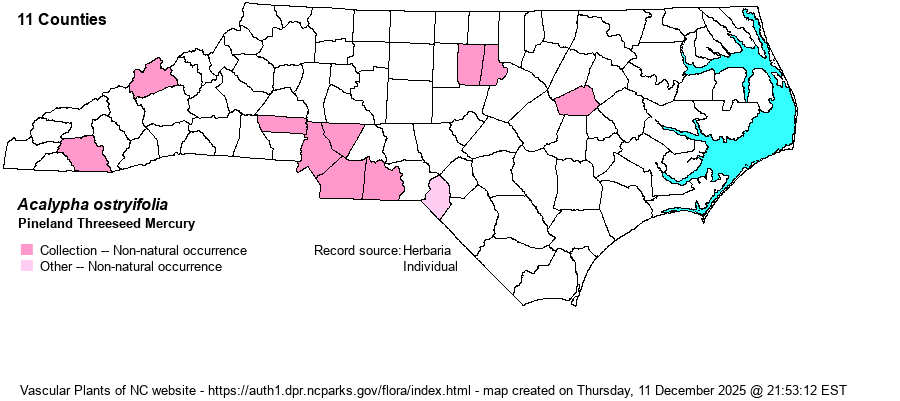| Author | Riddell ex Coulter | |
| Distribution | Scattered in the Piedmont and low Mountains, and barely to the western Coastal Plain. This species appears to be alien or adventive to NC, even though RAB (1968) considered it native. A consensus among field botanists in 2018 is that it is adventive in NC, and Weakley (2020) concurs.
NJ to IN and NE, south to FL and TX. Native certainly in the Midwestern and Mideastern states, west of the Appalachians. | |
| Abundance | Rare, with only scattered occurrences. The NC NHP considers it probably not native, though had not given it a State Rank. The website editors give a State Rank of SE? (perhaps or probably exotic). | |
| Habitat | Specimen labels of NC plants include ruderal habitats such as: garden weed, waste ground, campus, roadside, railroad yard, downtown. | |
| Phenology | Flowering and fruiting late June-October. | |
| Identification | From our other threeseed mercuries, this one differs in having the female flowers terminal, or the spikes bearing only one sex (vs. females basal in the inflorescence). This robust member of the genus, often growing to 3-4 feet tall, has broadly ovate leaves, usually cordate at the base, with long stalks of 1-2 inches. | |
| Taxonomic Comments | None
| |
| Other Common Name(s) | Hornbeam Threeseed Mercury, Hop-hornbeam Copperleaf | |
| State Rank | SE? | |
| Global Rank | G5 | |
| State Status | | |
| US Status | | |
| USACE-agcp | | |
| USACE-emp | | |

